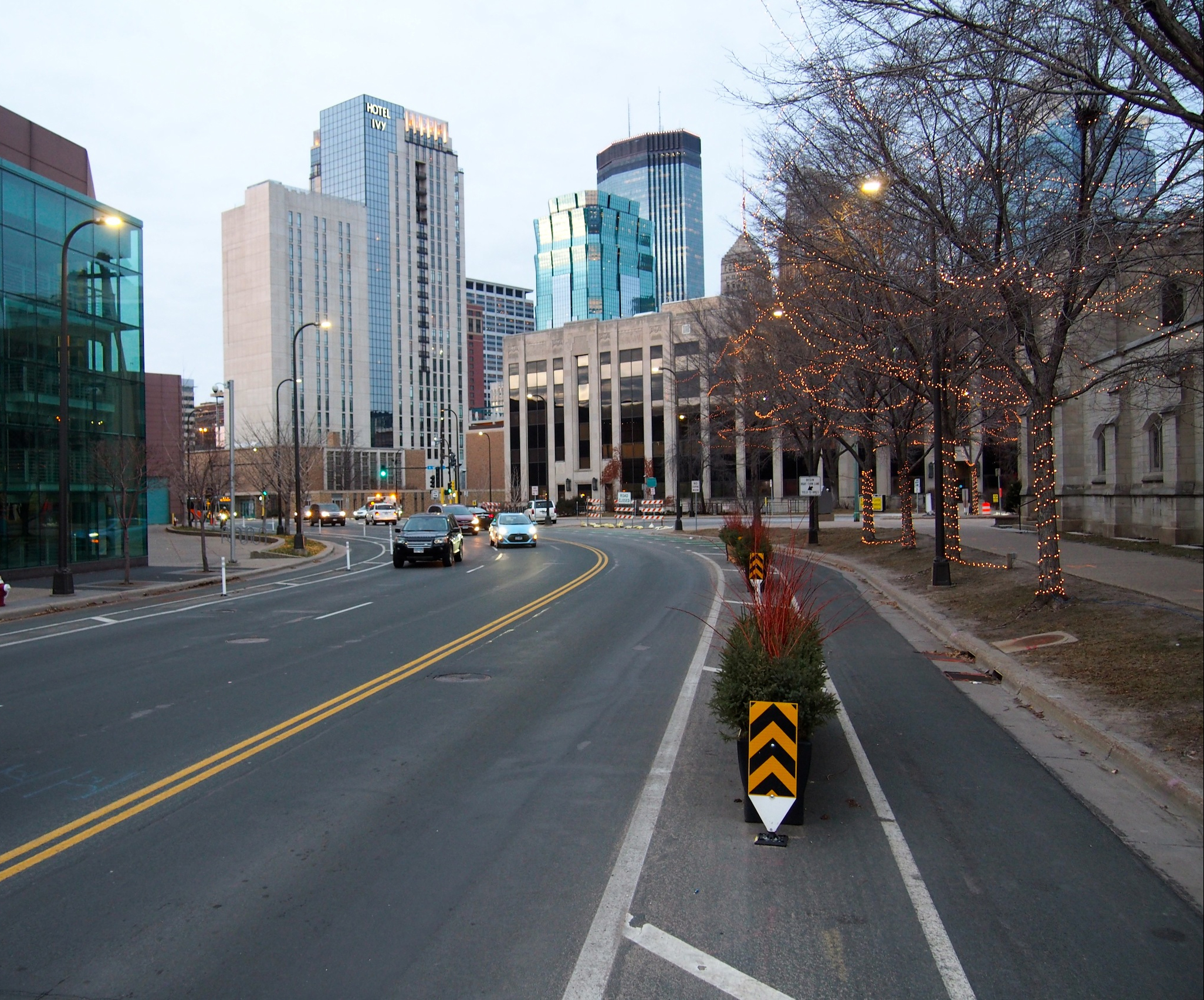Strategy 8 Design bikeways using best practices that reflect the community and serve as an asset to people who may not currently ride a bike or use micromobility.
The actions within this strategy are divided into two categories:
Action we will DOActions we will SUPPORTAction we will do are followed by “DO” and are colored in dark gray, and actions we will support are followed by “SUPPORT” and are colored in light gray.
Learn more about how we get thereBikeways provide clear benefits to the users of them, but often provide additional benefits to those who travel along the same corridor. Examples include traffic calming and reduced speeds of vehicles which lowers the risks and severity of crashes along those corridors. Including additional elements like greening along bikeways provides multiple benefits, like more protection to the bicyclists, helping to capture rainwater before it enters the stormwater system, creating habitat for birds and other small animals, and providing visual interest for people traveling along the corridor, no matter the mode of travel.
Actions to design bikeways using best practices that reflect the community and serve as an asset to people who may not currently ride a bike or use micromobility.
Bicycling 8.1
Design protected bikeways to accommodate access to the curb for the mobility impaired, working directly with the Minneapolis Advisory Committee on People with Disabilities and the broader disability community to test and monitor designs.
Supported goals:
Safety Equity Mobility
Related actions:
Difficulty:
Low
Timeframe:
2020-2023 (Years 0-3)
Status:
On-going
Bicycling 8.2
Incorporate median islands and intersection treatments into protected bikeways and neighborhood greenways that benefit people walking as they cross streets.
Supported goals:
Safety Mobility
Related actions:
Bicycles 4.2
Difficulty:
Medium
Timeframe:
2020-2023 (Years 0-3)
Status:
On-going
Bicycling 8.3
Install greening and stormwater infrastructure elements along trails, protected bike lanes, and neighborhood greenways.
Supported goals:
Climate Prosperity Mobility Active Partnerships
Related actions:
Design 4.1, Design 4.2, Design 4.3
Difficulty:
Medium
Timeframe:
2020-2023 (Years 0-3)
Status:
On-going
Bicycling 8.4
Integrate public realm or public art projects into bikeway features to reflect the community when appropriate.
Supported goals:
Prosperity
Related actions:
Difficulty:
Medium
Timeframe:
2024-2027 (Years 4-7)
Status:
On-going
See also actions:
- Bicycling 1.4
Use design to prevent blocked lanes

